Rollei
Yes, that’s what I said,…1929 to 2012. I think the Rolleiflex TLR FX-N, which was introduced at Photokina in 2012, was the latest model. Yes, I know there’s an older Rolleiflex GX,. ..maybe the Germans don’t know ‘F’ comes before ‘G’. But discounting their naming conventions, I don’t think there is another camera in any format with that long of a run. And a couple of special iterations. Like the cover photo of a gold plated GX “Royal” sitting next to a Rolleiflex FX model. It is a new company, DHW Fototechnik, but they have advanced the line while keeping the build quality. And they are VERY expensive. So, you have to love TLR’s.
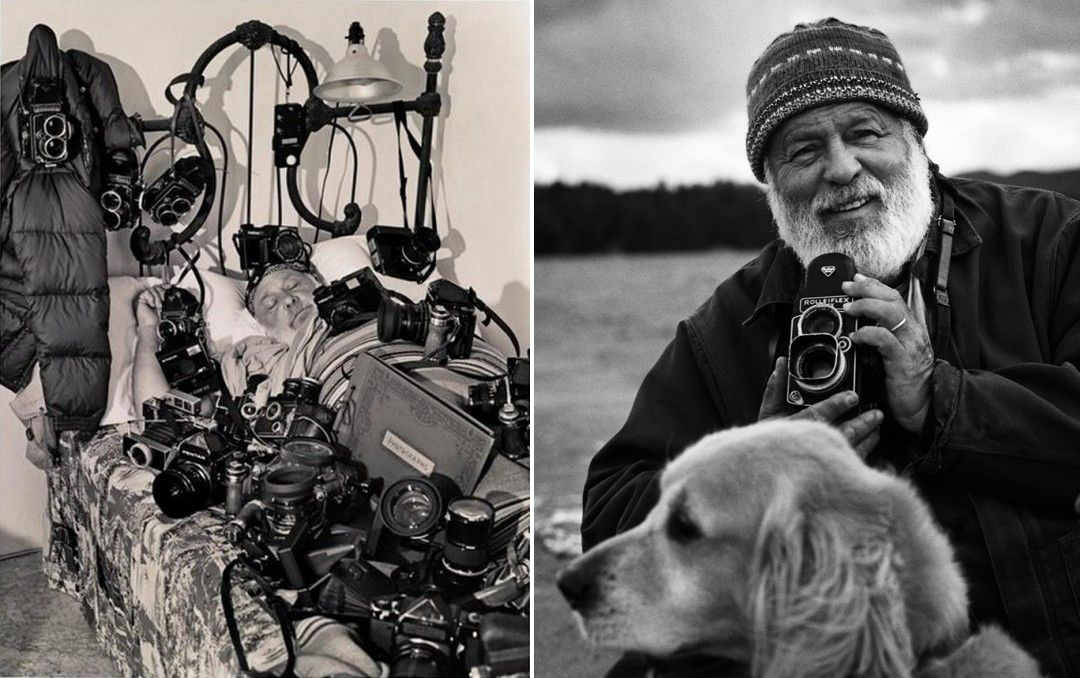
Rolleiflex TLR FX Sharper?
In fact, the new 80mm Zeiss Planar lens on the FX is considered even sharper than the original 2.8F! How that is possible, I don’t know. But I know it’s not just me. It’s an opinion that is treated as fact because it comes from so many sources online. Plus, they have two other cheaper models, the Rolleiflex 4.0 FW and the Rolleiflex 4.0 FT. I’ve never actually seen those two, and am not sure they are available in every country. Either way, they’re new. But let’s get back to the classics; Rolleiflex 2.8F and Rolleiflex 3.5. The differences between the letter designations is pretty minor until the FX. Various lens manufacturers were used. Zeiss, Schneider,….and various lenses. The Tessar, Planar, Xenotar, etc. All performed to varying degrees of contrast and sharpness. I.e., Zeiss Planar is sharper than a Tessar. But when stopped down, I doubt you could find any real world difference. Same with the Schneider Xenotar vs. Xenar.
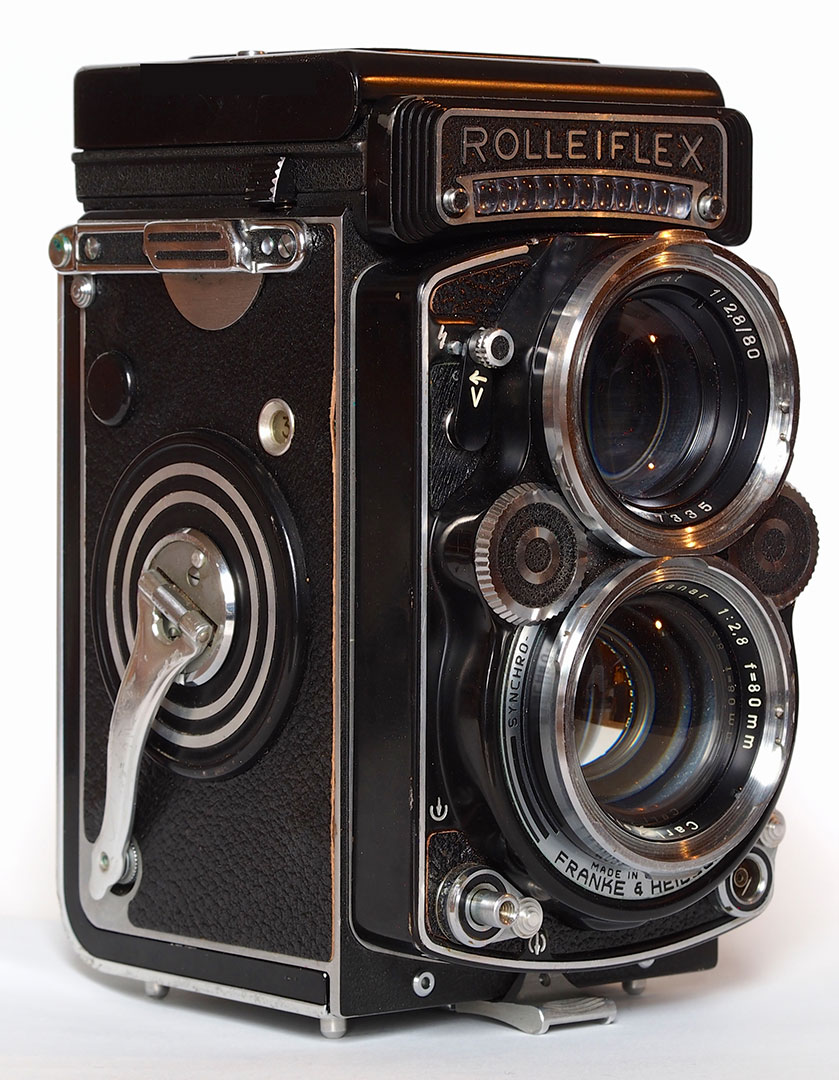
Let’s see what the newer Rolleiflex models offer. First, on all the Rolleiflex models, you will find no light sealing foam. The back door is manufactured with such tight tolerances, that there is no need for it. The metal on metal is precise and light tight. And, as the mirror is fixed, the advantages of lower vibration for slower shutter speeds when shooting handheld is obvious. Also, a viewfinder that doesn’t go dark, and compared to any SLR, it’s very quiet. Also, you are looking down when shooting. This has an effect on the people subjects who curiously feel less self conscious when shooting. The downsides of any TLR camera? Well, the image you see in the viewfinder is backwards. And your shooting square. There is no horizontal or vertical positioning. (same with any square format camera)

Solidly Built
If you are seriously considering a 50+ year old camera, I would have it CLA’d. Actually, any camera that old. For Rollei’s, Harry Fleenor on the west coast, and Krikor Maralian on the east coast. Both are factory trained by Rolleiflex, and both have the special tools and inventory of parts to make any age Rolleiflex TLR hum. The only thing I would additionally do, especially with the older models, is change to a brighter focusing screen.
The newer Models Specs;
Helmut Newton, Diane Arbus, Vivian Maier, are just a few of the photo stars that used the Rollei at one time or other in their careers. They are a very diverse group of photographers that have used this camera. But do the cameras they use live up to the newer Rolleiflex TLR’s? Sorta. If you don’t count the metering, LED’s and flash TTL advancements, they are still pretty much the same cameras. Now I know people who depend on TTL, and at least some metering, will disagree. But as much as I may like the newer Rolleiflex TLR, I can get the same thing done with both.
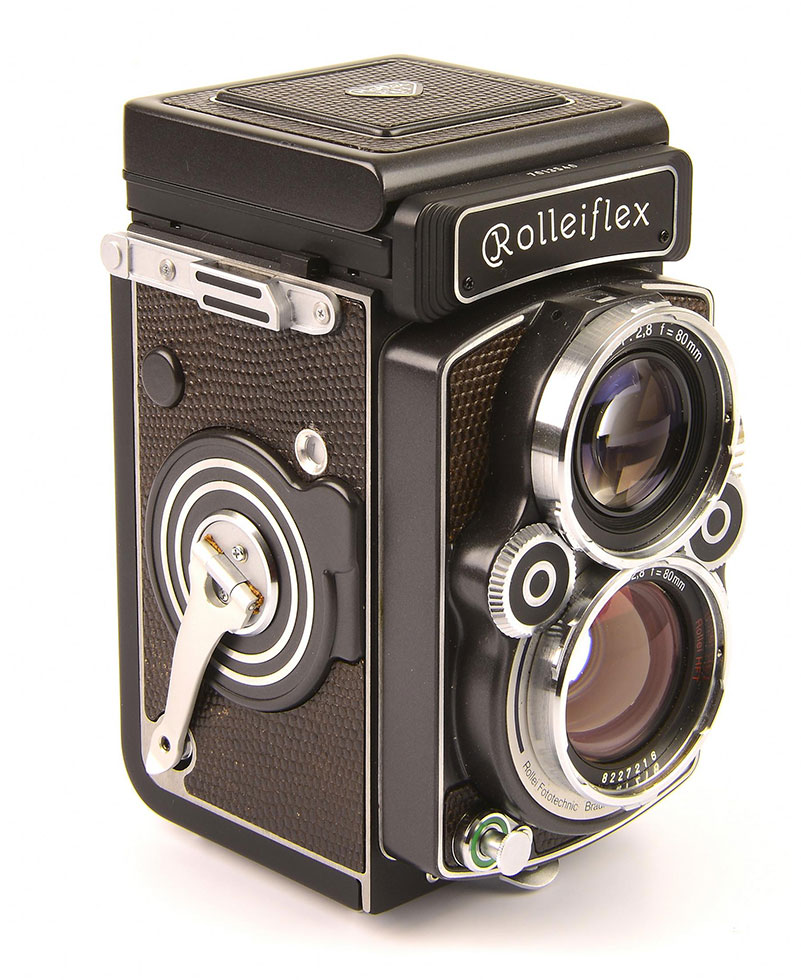
Newer Metering
Well, they had to advance with time. Even a little. The new center-weighted metering system with kind of cool LEDs is really old school to every 35mm out there. But it is very accurate. The meter measurements are taken from the viewing lens. This makes sense to me at normal viewing distances. I certainly wouldn’t count on it with Macro work, but a TLR is a bad camera for Macro work anyway.

What’s weird is the meter turns on when you half press the shutter button. I say weird only because that is a very modern feature. (like a Nikon D800 or Canon 5D) The LEDs are like a stop light. Green is correct exposure, Yellow is 1/2 stop under or over exposed, and Red is 1 stop over or under exposed. However, if you are using filters, you MUST put it in front of the viewing lens first to take a reading. Yes, it’s a PIA. But I never use filters, (other than UV), so it doesn’t matter to me. And the older Rollei TLR’s have no meter. (I use a cellphone app for a lightmeter,…works great)
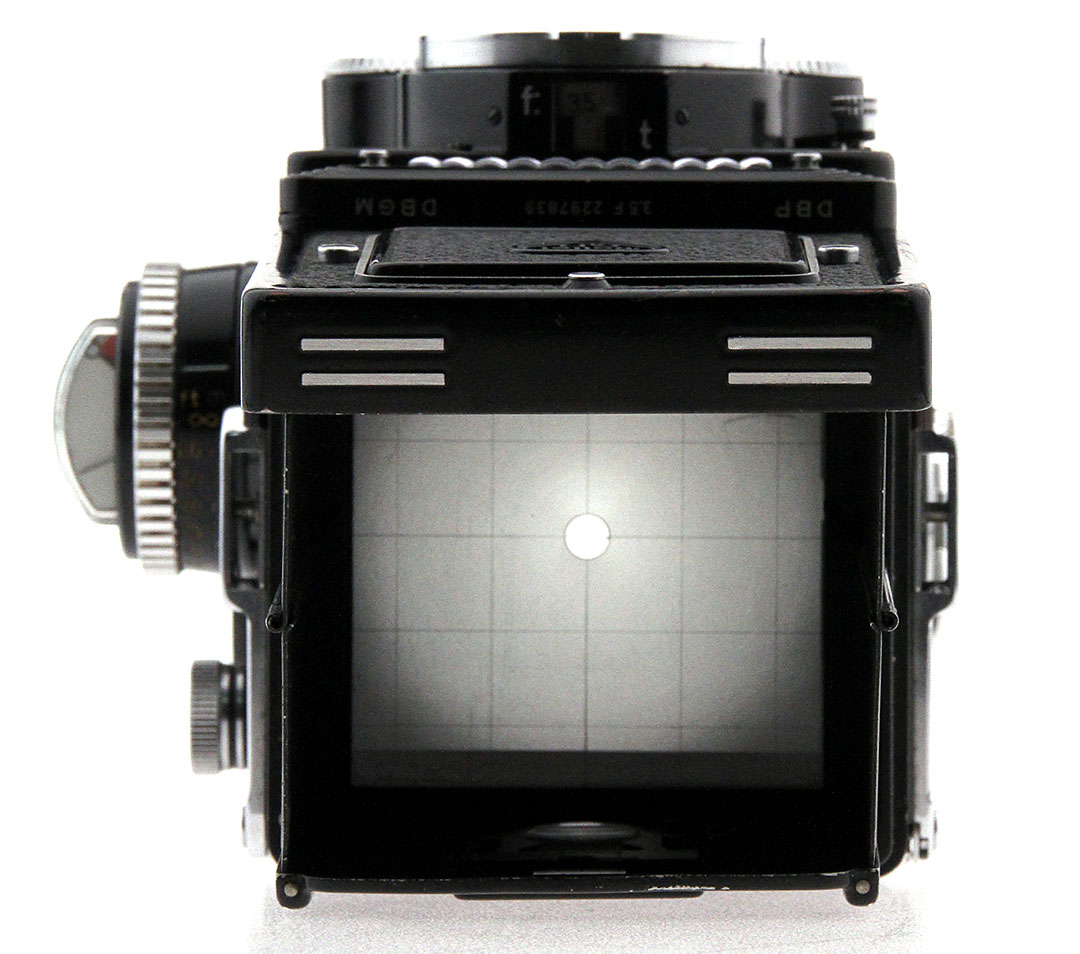
OTF TTL
Like a Hasselblad 500 C/M, the older models have no TTL meter. But the newer ones do. Off the film plane measurement, making it quite accurate. And Metz allows any SCA300 flash to work on the side hotshoe, allowing full TTL! Of course the cost of all these new electronics in the present day Rolleis are batteries. While there is a battery check button, they seem to consistently last about 50 rolls of film. The classics don’t suffer from this concern.
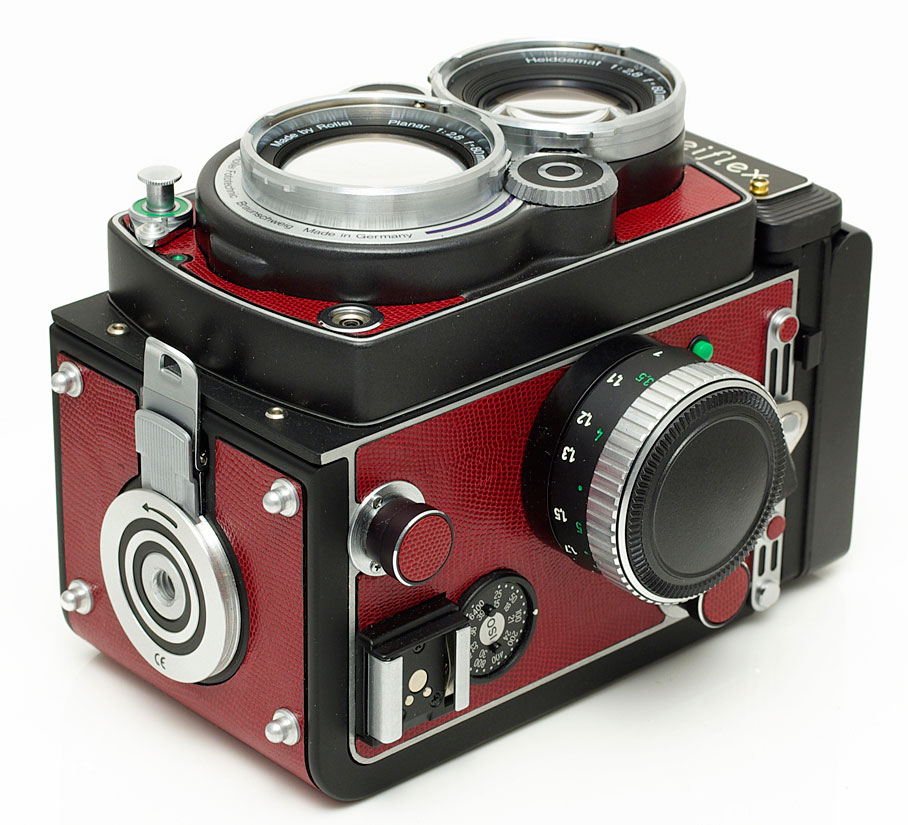
Set ISO dial, and shutter speed/aperture. These are simple and self explanatory. Even the modern Rolleiflex TLR is not rocket science. One caveat; I have never used a Rolleiflex TLR GX, but anecdotally hear the shutter release is very stiff. Apparently they fixed that and the film loading on the FX. The older models do not have this problem.
Whether your model uses Carl Zeiss or Schneider Kreuznach lenses, all the lenses are spectacular. I use the flip up magnifier a lot for very precise focusing, but I know photographers who have never used it, and focus seems fine. 45 and 90 degree viewfinders are available, though not as plentiful as Hasselblad viewfinders.
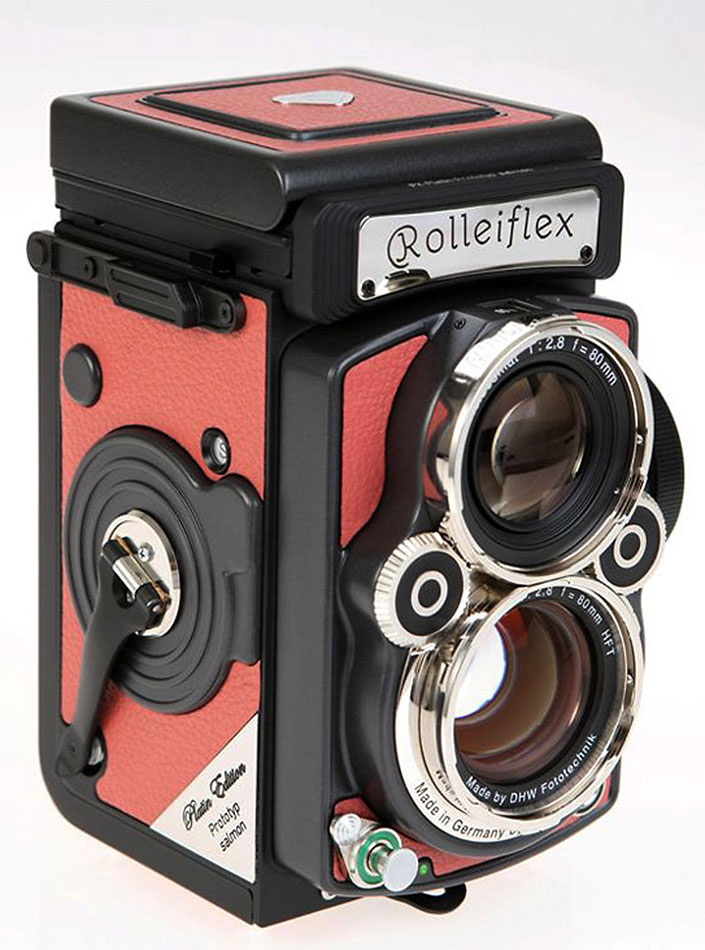
History of Rolleiflex
The Franke & Heidecke company were the original inventors/manufacterers of the Rollei. Heidecke moved the viewing mirror, put the lenses closer together, and constructed most of the camera from stainless steel. (as opposed to brass) In 1937, Rollei won the Grand Prix of the Paris World Fair. Although large by today’s standards, it was considered the Leica of medium format at the time, and a very hand holdable camera. While the Rolleicords were considered a consumer Rolleiflex at the time, they seemed to have a build quality that belied their cheaper prices. (but a film advance “knob”, not crank)
The older models sometimes suffer from peeling leather. However, this can still be made to appear original with both kits and by Harry Fleenor or Krikor Maralian, both whom have lots of Rolleiflex leather in stock. But there are some newer models that were made with ‘Urushi’. A handmade, high quality Japanese technique of applying lacquer. But I think only a few hundred of these were made. Probably made for collectors as opposed to photographers.
Old or New
If you can live without the added electronics, the HFT coated Apogon 2.8 / 80 mm lens, (the older lenses are exceptional), and TTL flash, (most TLR users don’t use flash), the Rolleiflex is an exceptional long term investment value. Even a Rolleicord for that matter.
Just 3 years after release of their latest TLR model, (2015), the factory of DHW Fototechnik was put on the auction block. Curiously, their website is still up and running, including listing TLR’s.
TLR German Website

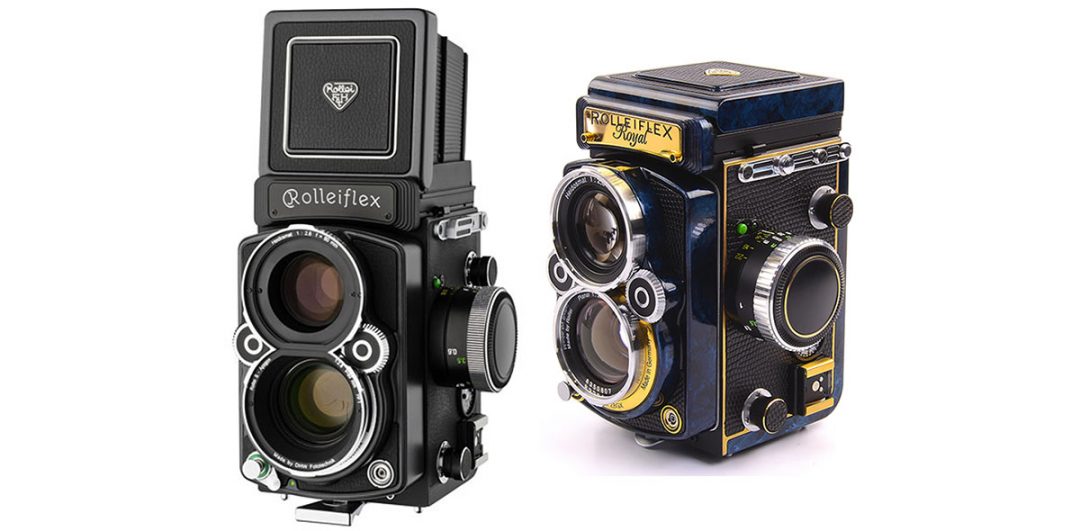

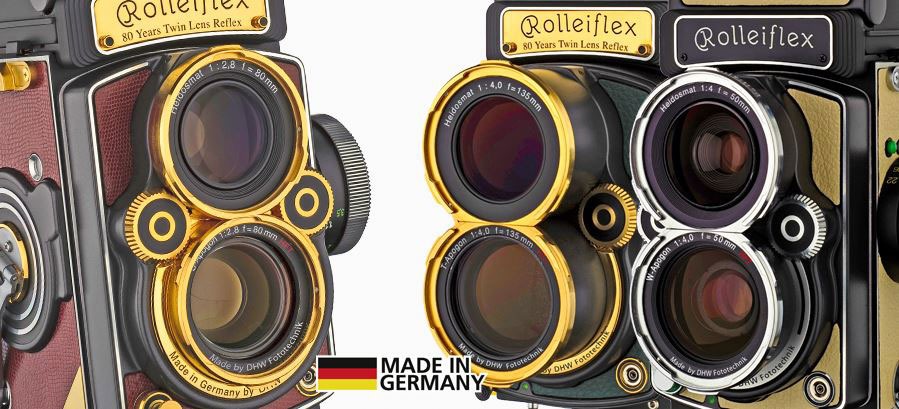
Hi,
Did you know that great Antônio Carlos Jobim used Rolleiflex ? It’s even mentioned in a timeless bossa nova tune “Desafinado” (“Slightly out of tune”):
“É que os desafinados também têm um coração
Fotografei você na minha Roleiflex
Revelou-se a sua enorme ingratidão
Só não poderá falar assim do meu amor”
Here is an english translation:
“Is even if I’m out of tune I have a gentle heart
I took your picture with my trusty Rolleiflex
And now all I have developed is complex
Possibly in vain, I hope you weaken, oh my love”…
I own a Rolleiflex 2,8 F Zeiss Planar (this one is really perfect, unlike previous two), and I can tell you those cameras were never “slightly out of tune”; what is really
“way out of tune” is digital greed and frenzy 🙂
P.S.
I do use digital cameras for my work (Nikon) and I like them not only as a professional tool, but for other reasons, but if I had to choose, it would be a film, color
and b/w. Should God ever decided to create the Universe again, I’m pretty shure there would be a room for a Franke & Heidecke box with two lenses… cheers!
Hey Steven,
Yes, he was an awesome Brazilian who appreciated the finer things in life. Including cameras. You certainly didn’t need to be a photographer to appreciate the sheer beauty of the Rolleiflexes. 🙂
Federico
Brilliant, very professional review. Brava!!!
😳 Hi Gene,
Thanks. But I don’t particularly think my writing skills are very “brilliant”. However, I’ll agree,…the Rolleiflex TLR images are sheer camera porn! 😁
Federico